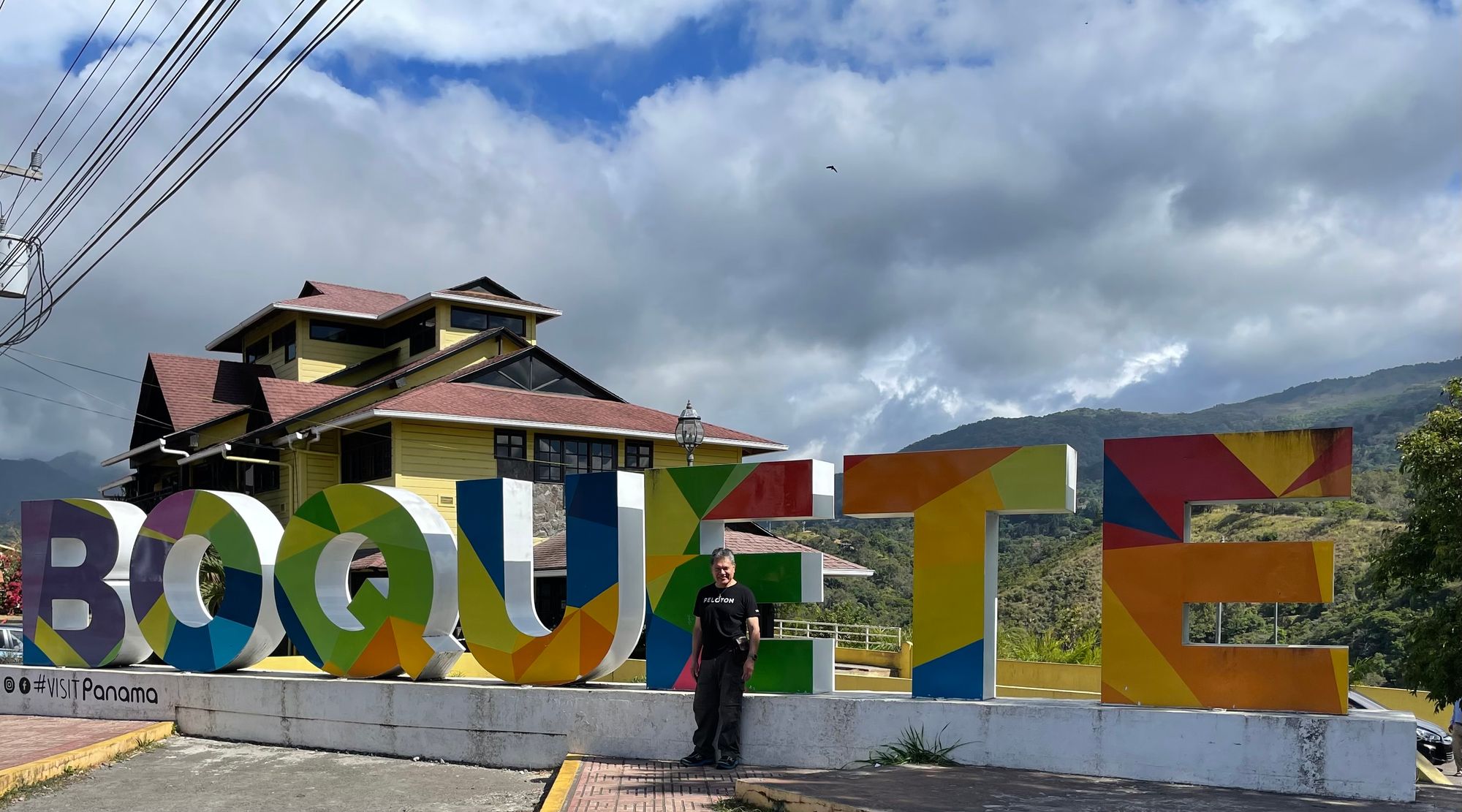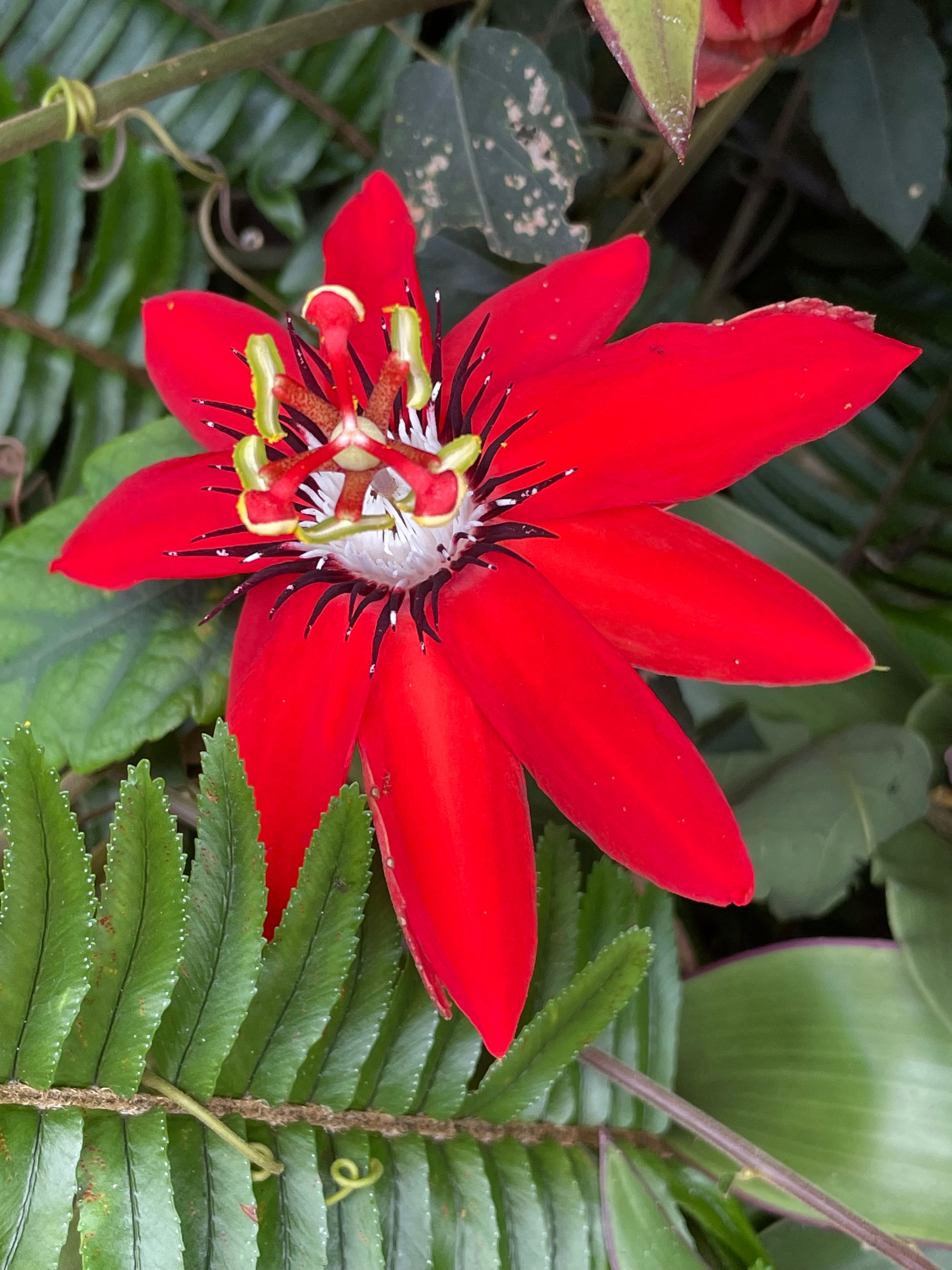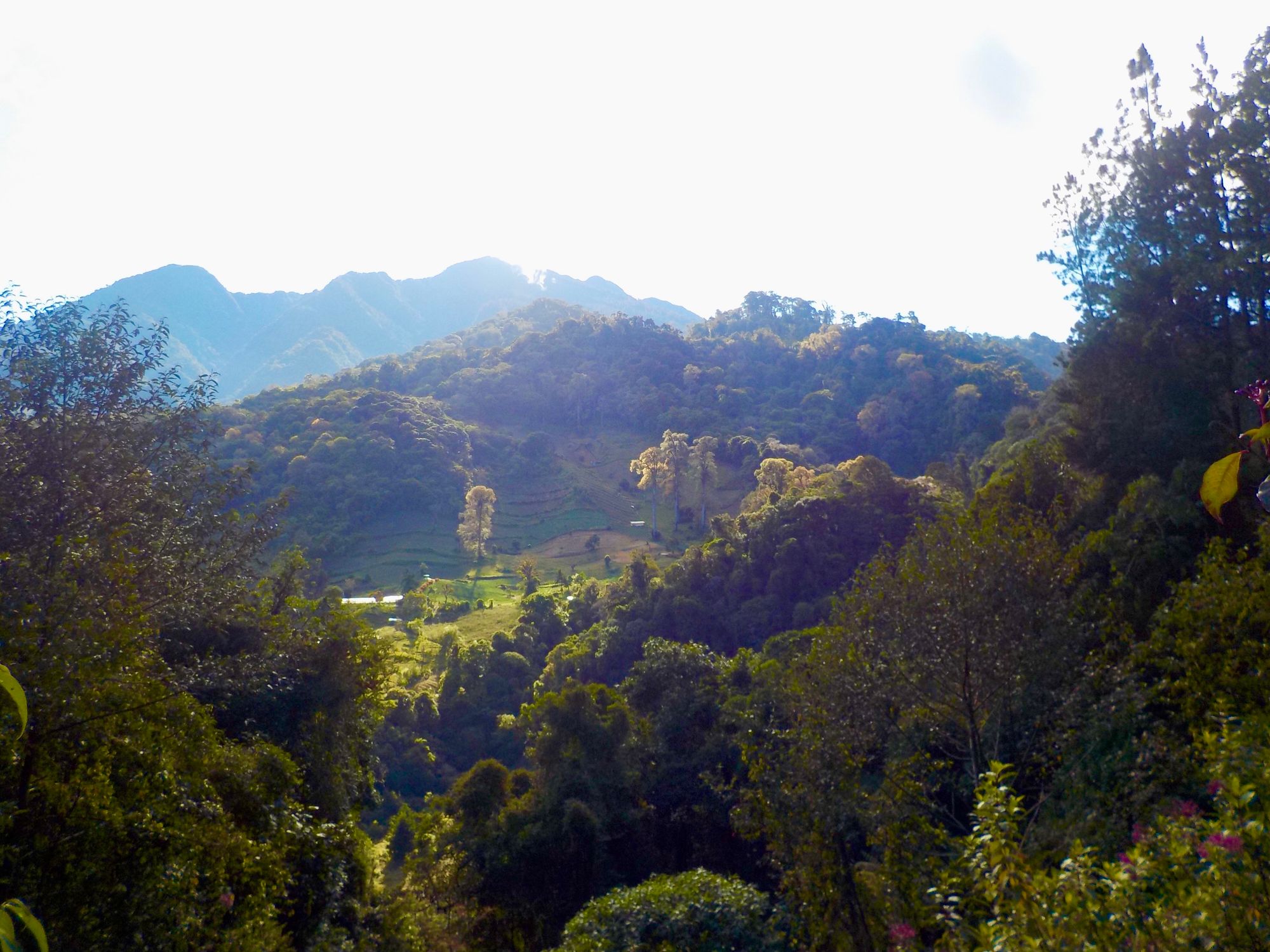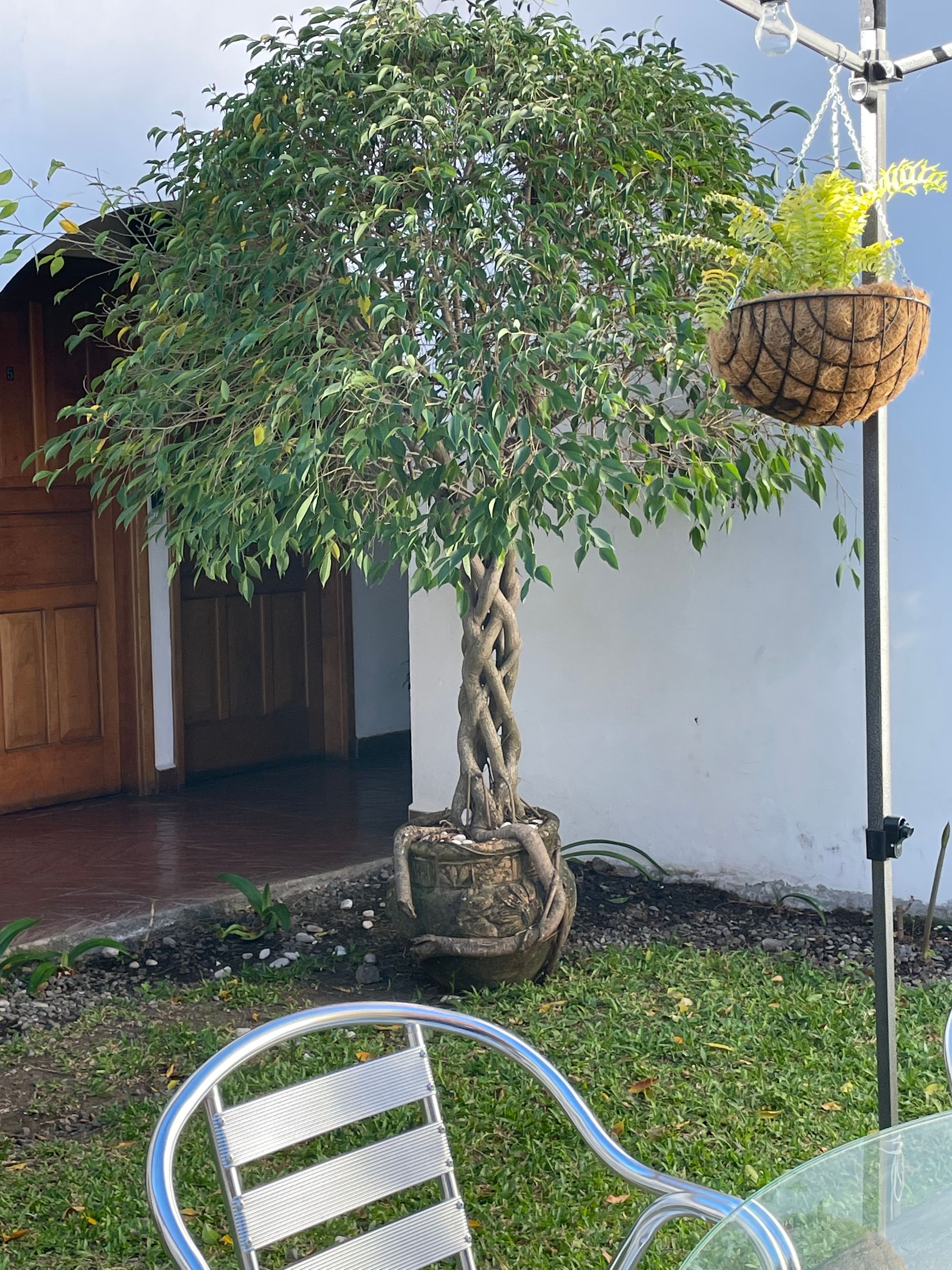Panama Scouting - Day 22 - Boquete Neighborhoods

Happy Friday from Boquete! Buenas tardes!
We spent the whole day touring the neighborhoods around Boquete, and some in town, to see what areas we might want to live in. We found three especially attractive areas.
Boqueteno Brises (imagine an ~ above the n in Boqetena, and say Brises like Breezes with an s instead of a zzzzz) is an area about ten minutes west of Boquete, up over the top of the hill/mountain that is Alto Boquete, and just down the other slope a bit. That area is a bit warmer, but the degree is negligible. The neighborhood has been built by people buying lots and building regular houses - not McMansions, as some areas have, and not a gated country club kind of development. Both ex-pats and Panamanians live in the neighborhood, and each house is distinctive. Most homes have the traditional arched windows and doors that appeal to Miguel, and most have the tile roofs he loves. We could live there without a car by using taxis for about $5 per ride into town. But how do you tell the taxi where you are since there are no street names or addresses? "Count 4 blue houses, then the second cream-colored house on the left is ours." The area is beautiful, and the homes are very appealing. A 3 bedroom home with 2 baths is approximately $900 to rent, and $120,000 to $150,000 to buy, mainly because they are outside of town. All of them have mountain and valley views.
Panamonte Estates is in town near the Hotel Ladera we stayed at when we first arrived with the tour. We could walk into the core of downtown Boquete within 5 minutes, and it gives no sense of being so close to town. It is on the Caldera River, tranquil, and the houses are lovely and not over-built. It would be easy to live in that area without a car, calling a taxi to help get the grocery shopping home. Rents here run from $900 to $1400, but most of the higher rents are for 2-story houses, which we would rather avoid. Purchases run from $140,000 to $220,000 for those same rentals and similar homes.
Alto Jarmila: The third area is Alto Jarmila (the J is said like a Y, as in Juan) and is in the cloud forest and coffee plantations above Boquete. This area has well-paved roads, fiber optic internet, and strong water pressure, and the views are amazing - see the third photo. We identified a couple of large houses, and when we got back to town, we looked up the mountain to see them from a different perspective. Again, the rents in that area are $900 to $1100 for a three-bedroom, two-bath home, and purchase prices range from $120,00 to $250,000 for those same homes. Virtual castles on the mountain sell for much more, but I am not interested in cleaning them - at all! Surprisingly only a ten-minute drive away - winding up the mountain, the fine mist and rainbows of the afternoon were magical, and the temperature and quiet were very comfortable.

The US dollar is the currency in Panama - they have a coin that is the equivalent of the $1 bill, called the Balboa, and that is the official currency, but if you said that the price was 24 Balboa, you would still receive two US $10 bills, and four Balboa coins worth $1 each. Your bank statement shows a balance in B (Balboas), but all paper money, and most coins, are still US currency, except for the 1 B coins. That makes it very easy to think about the pricing of things - the comparisons are easy!
My tummy loves having papaya for breakfast in the morning - for Miguel, it speeds up his system; for me, it settles my tummy. Papayas are enormous here, up to 7 or 8 pounds each, and cost about $1 to $2 each depending on size. We don't even see papaya's that large in Seattle, and those I find are $4 - $5 per pound. Papayas, bananas, plantains, avocados, oranges, yucca, and greens like onions and lettuce are growing in people's yards - Miguel is very excited to have his inner farmer come out in fruits and vegetables volunteering to grow in our yard without special skills or attention. I am excited for exotic flowers and plants and birds and coatis to visit our yard to help eat Miguel's fruits and vegetables.
Maury (pronounced Maw-ry) told us many interesting things about the neighborhoods and recommendations for banks, pharmacies, restaurants, and shops. She told us the positives and negatives of each neighborhood, such as which places are more difficult to pass when it is raining hard, which properties near the river are built up to avoid flooding when the river rises, where the roads are not kept up well, where the electrical infrastructure is older and vulnerable, and which routes are suitable for avoiding the main drag during rush hour or festival. Which of the big grocery stores are best, the best gyms, which spas are well-priced, and places to think about renting for a month or two when we arrive and set about finding a rental - Maury knows it all. She helps (as do the other private tour guides who work with Panama Relocation Tours) people to set up in Boquete, finding rentals, good immigration lawyers to help with paperwork, setting up bank accounts (she was a banker before starting these tours a year ago), getting a Panama driver's license, finding services, and helping people to avoid pitfalls. This is such an excellent service! Local people who speak English well, know both the area and how to get things done, and who will be available as consultants, guides, interpreters, and red-tape cutters greatly benefit those who re-locate.
The woman who started Panama Relocation Tours, Jackie Lange, should franchise to every country - she has a great system! We have a book of advice and recommendations (ex: lawyers, visa types and requirements, labs for covid testing, hotels, doctors, insurances, car rentals, etc., etc., etc.), and then access to much more information online, including forums and Facebook groups for sharing knowledge, and the ability to ask questions and get quick answers. How to find a good architect/contractor and workers for building or remodeling a house, how to bring a pet from the USA, moving goods from the USA, tax rules to watch for and attorneys to consult, questions to ask and verify when renting or buying, where to go to pay utility bills (since there is no mail service, and not all bills can be paid via bank transfer), and more and more and more. Jackie Lange started Panama Relocation Tours twelve years ago, and what she has built is so impressive!
Today was well worth the time - a move to Boquete seems very real and reasonable.
Photos? Oh, yes:

Miguel at the visitor's center (where the Coatis come to eat) where the Boquete sign proves he is here!

Another sponsorship by the color Red, this flower was found in the garden of a short-term rental we visited. Cool, yes?

A view from the Alto Jarmilo road we traveled

A ficus tree in the hotel interior courtyard. Do you know those cute braided ficus "trees" we can buy as houseplants in Seattle? This is what happens when they grow up happy, and this one is only 6 years old. You might note that it has outgrown its pot, so when the breezes are strong, it falls over, but the braided trunk(s) is a whole different concept than the ones that I know from home. Braided ficus trees are all over the place, in pots and planted into the ground, and in all stages of growth, but they proliferate in this environment and don't stay houseplants for long! Until tomorrow! Our time remaining on this trip is coming to an end in the next few days. Miguel has switched to Tropical Mode, so I fear the transition back to winter in Seattle will be tough. We are not ready to leave, which is a good sign for returning in September!
Thanks for reading this chapter; I realize it is a long one! Buenas noches!
Mary Bea y Miguel